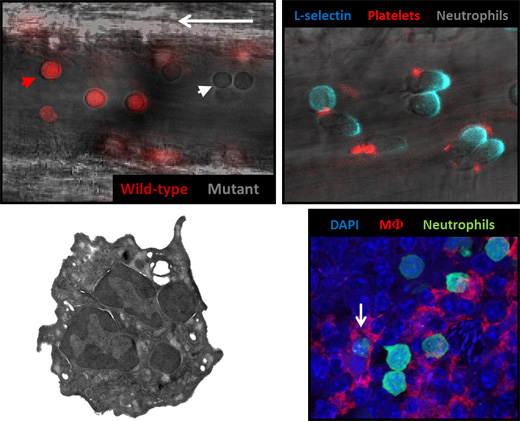Videos
Video 1. Rhythmic modulation of the hematopoietic niche by neutrophils. This video is the paperflick for our paper Casanova-Acebes et al., Cell 2013. It illustrates how circadian maturation of neutrophils in peripheral blood infiltrates the bone marrow to regulate hematopoietic stem cells in this organ.
Video 2. Neutrophils scan for activated platelets to initiate inflammation. Summary video of our Sreeramkumar et al. paper in Science 2014. It models the mechanisms by which platelets bind to, and activate neutrophils to launch vascular inflammation.
Video 3. Global infiltration of tissues by neutrophils regulate tissue homeostasis. Summary video for our ongoing study showing that neutrophils infiltrate many tissues even in the absence of infection or injury. Entry in some organs, like the intestine, plays unexpected regulatory roles.
Video 4. Neutrophil aging is a host protecting program. This video shows our current studies showing how neutrophils change their phenotype in the circulation, from “fresh” to “aged”. As their migratory capacities change, so do their contributions to infections and inflammatory disease.
Images

Legend for image panel: (Top left to bottom right) (1) Images from an intravital experiment of the inflamed vasculature of the cremaster muscle, in which we can identify and compare the behavior of leukocytes of different genotype on the basis of endogenous fluorescence, in this case mutant cells are detected by contrast and wild-type cells by expression of DsRed (red). (2) Inflammatory neutrophils (contrast) displaying polarization of the surface receptor L-selectin (blue) capture platelets (red) from the circulation. (3) Electron micrograph of an “aged” neutrophil. (4) Neutrophils physiologically cleared in the spleen of a mouse can be identified by GFP expression (green) in close interaction with red-pulp macrophages (red). Some neutrophils are actively engulfed by tissue macrophages (white arrow).






